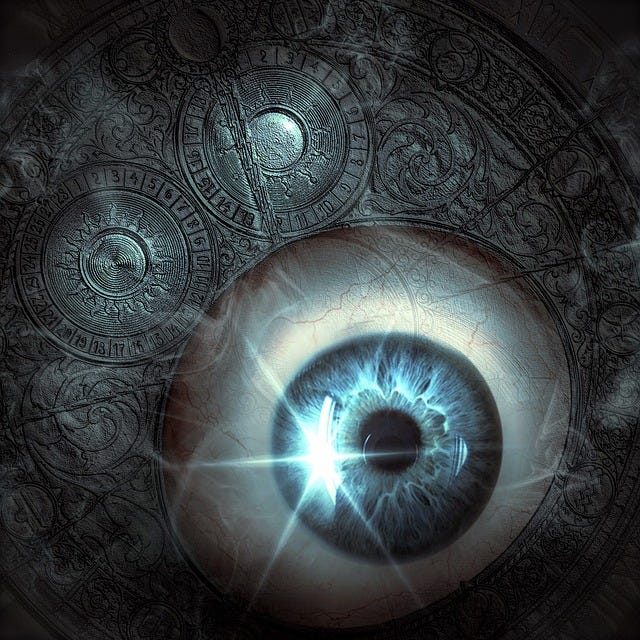Creating the Webbd Wheel: Bluebeard
In which a young man sees clearly ...
Bluebeard is an old French fairytale I’ve loved all my life. When I began to tell stories, I discovered several different endings, some with religious overtones, some with the typical prince-on-a-white-horse rescuer at the last minute.
For me, those are merely superficialities which entirely miss the deeper meanings of the story. As the years pass and I gain more experience, the tale grows richer and richer in wisdom.
My life is guided by a handful of core principles. One of those is the commitment to see things clearly, which is to say refraining from arguing with what is or making up stories in my head and believing in them. I have not always lived this way. For most of my life I practiced denial. I made excuses for the behavior of others. I minimized or invalidated my own intuition and feelings. I made assumptions and had expectations.
We refuse to see things clearly in order to protect ourselves and others. It’s very human. However, I’ve learned in the end it creates far more problems than it relieves. One might find temporary ease in arguing with what is and making up elaborate stories about the motives and experiences of others, but the ease doesn’t last. Arguing with what is can, in fact, kill us. It’s a strange quirk of human nature that many of us would rather die than face our fear.
Bluebeard is a story about facing what is, seeing it clearly, and calling it by name. What I’ve discovered, and what Morfran discovers in post #17 of The Hanged Man, is seeing and naming our fears clearly disempowers them in magical ways. Fear does not expect to be examined face-to-face in bright light. It counts on pursuing us through shadows, speaking to us in half-heard whispers, and visiting us in dark dreams. Fear believes it’s invincible, with good reason.
Morfran’s sister, Creirwy, was an innocent. She didn’t recognize darkness because she’d not met it before. She saw Raoul’s blue beard and had instinctive feelings about it, but her infatuation with the handsome, seductive stranger blinded her to the clear visual sign that something was wrong.
How often do we do this? We know something isn’t right. We know it’s dangerous. We have a bad feeling. But we don’t want to see it clearly, because then we have to do something about it, and what if we’re wrong? What if we’re being unjust or intolerant? What will people think of us? How can we bear to lose our hopes and dreams? So, we look away. We minimize. We deny. We decide the blue beard is sexy and makes the object of our desire even more attractive. Besides, it’s not really that blue. The light was odd, that’s all.
Her sisters tell Bluebeard’s young wife to “pretend she never saw” what was in the locked room. Never speak of it. Never think of it. Pretend it didn’t happen. We don’t talk about things like that in this family!
My favorite part of the story is the key that weeps blood. They key knows. The key saw. The key will not pretend it away. The sisters apply every remedy they know, but nothing stops the key from welling blood, drop by drop. It can’t be hidden.
And, of course, we can’t hide from what is. We can try. We do try. We try with addictions and other self-destructive behavior. We try with distractions. We try with success and money and efforts to control others.
None of it works. We cannot unsee, unhear, unknow once we have seen, heard, and known. We may even kill ourselves or others trying, but Truth is Truth. As my partner says, “Rocks are hard, water is wet.” What is, is, and we might as well deal with it, because it’s not going away.
Years ago, I wrote my own ending to this story for telling, in which the young wife is neither killed nor rescued by a man. She rescues herself. She stops arguing with what is and chooses to see clearly. As Bluebeard stalks her across the ramparts, she turns to face him. “I see you. Your beard is blue.” In that moment, he becomes nothing more than a frightened, impotent shell of a man, and she becomes a woman rather than a too-sweet maiden. Never again will she tell herself a blue beard is not so very blue, after all.
She looked her fear in the face and named it.
(This essay was published with post #17 of The Hanged Man.)




